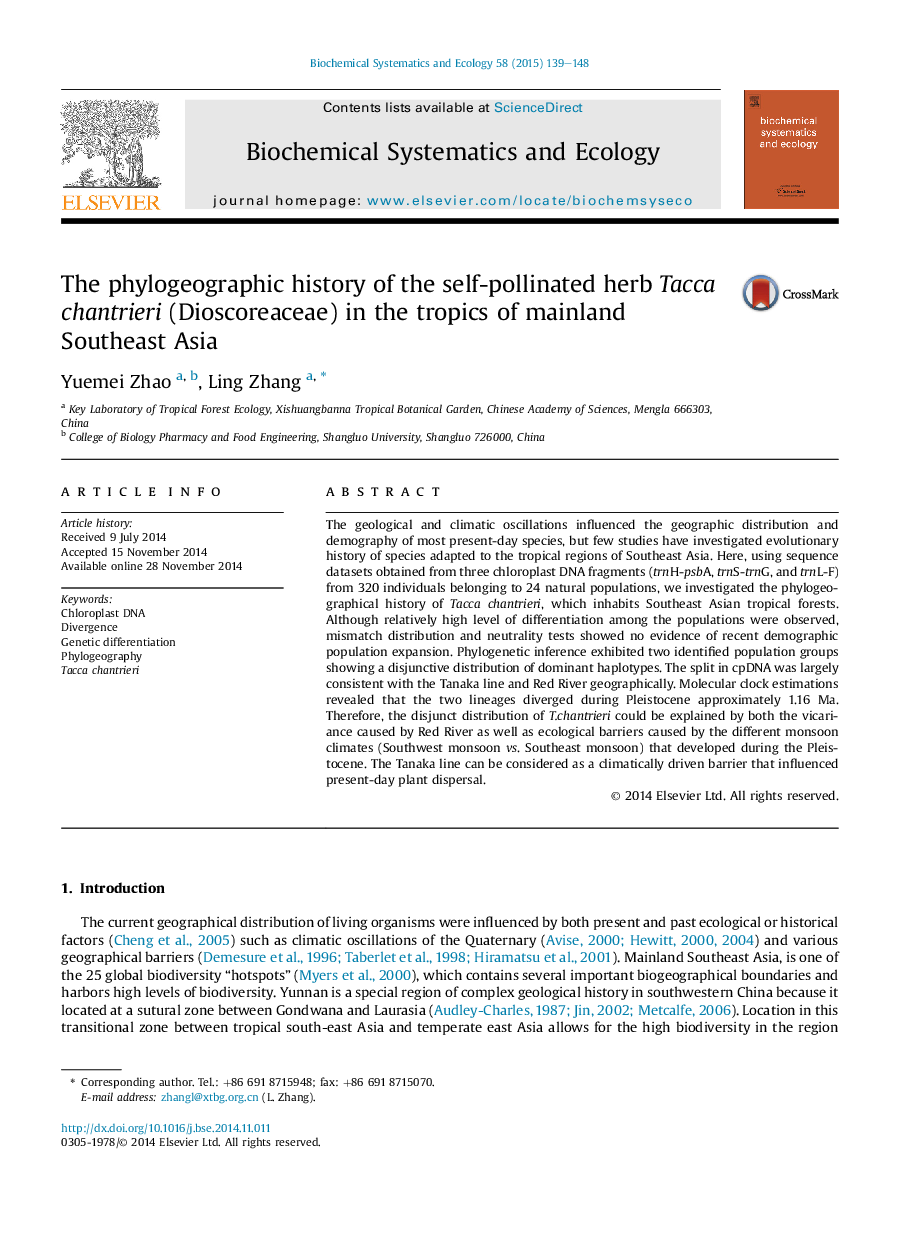| Article ID | Journal | Published Year | Pages | File Type |
|---|---|---|---|---|
| 1353878 | Biochemical Systematics and Ecology | 2015 | 10 Pages |
•We elucidated phylogeography of Tacca chantrieri using 3 cpDNA fragments.•We observed high differentiation among the populations of T. chantrieri.•Two identified population groups of T. chantrieri were explained by both Red River and the different monsoon climates.
The geological and climatic oscillations influenced the geographic distribution and demography of most present-day species, but few studies have investigated evolutionary history of species adapted to the tropical regions of Southeast Asia. Here, using sequence datasets obtained from three chloroplast DNA fragments (trnH-psbA, trnS-trnG, and trnL-F) from 320 individuals belonging to 24 natural populations, we investigated the phylogeographical history of Tacca chantrieri, which inhabits Southeast Asian tropical forests. Although relatively high level of differentiation among the populations were observed, mismatch distribution and neutrality tests showed no evidence of recent demographic population expansion. Phylogenetic inference exhibited two identified population groups showing a disjunctive distribution of dominant haplotypes. The split in cpDNA was largely consistent with the Tanaka line and Red River geographically. Molecular clock estimations revealed that the two lineages diverged during Pleistocene approximately 1.16 Ma. Therefore, the disjunct distribution of T.chantrieri could be explained by both the vicariance caused by Red River as well as ecological barriers caused by the different monsoon climates (Southwest monsoon vs. Southeast monsoon) that developed during the Pleistocene. The Tanaka line can be considered as a climatically driven barrier that influenced present-day plant dispersal.
